
Schmidt Ocean Institute Advances R/V Falkor (too)’s Mapping Capabilities
Schmidt Ocean Institute announced it has mapped two million square kilometers of seafloor — about the size of Greenland — and this year, has made two significant changes to advance the seafloor mapping capabilities of R/V Falkor (too): it changed the shape of the ship’s bow and added an Autonomous Underwater Vehicle (AUV) to its technology suite.Over a two-month dry dock period (April 28–June 28) in Talcahuano, Chile, the team reconstructed the bow of R/V Falkor (too), transforming it from a bulbous bow more common on offshore commercial vessels into a streamlined, V-shaped bow
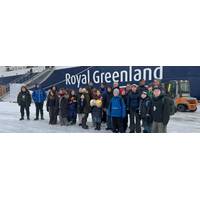
Global Efforts Underway to Document Plastic Pollution
This week, Greenland launched two “Plastic in a Bottle” capsules to track how plastic pollution travels in the Arctic marine environment.The effort is the latest from the Plastic in a Bottle project by the Arctic Council’s Working Group on the Protection of the Arctic Marine Environment (PAME). To date, 10 GPS-equipped capsules have been launched.The initiative is just one of many around the world sparked by concern about marine plastic pollution, because by 2050, it is estimated that the amount of plastic in the world’s oceans will outweigh the fish.Nearly all seas and oceans
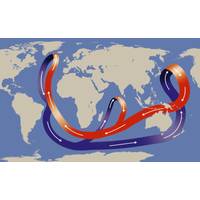
Iceland Identifies Atlantic Ocean Current's Possible Collapse as a Security Threat
minister told Reuters.The Atlantic Meridional Overturning Circulation, or AMOC, current brings warm water from the tropics northward toward the Arctic, and the flow of warm water helps keep Europe’s winters mild.But as warming temperatures speed the thaw of Arctic ice and cause meltwater from Greenland’s ice sheet to pour into the ocean, scientists warn the coldfreshwater could disrupt the current’s flow.A potential collapse of AMOC could trigger a modern-day ice age, with winter temperatures across Northern Europe plummeting to new cold extremes, bringing far more snow and ice.
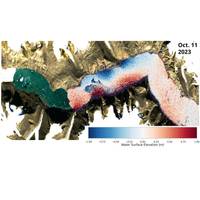
Trapped Wave Mystery Solved
Using a new type of satellite altimetry, a study led by Oxford University has finally confirmed the theory that the cause of extraordinary global tremors in September - October 2023 was indeed two mega tsunamis in Greenland that became trapped standing waves.In September 2023, a bizarre global seismic signal was observed which appeared every 90 seconds over nine days – and was then repeated a month afterwards. Almost a year later, two scientific studies proposed that the cause of these seismic anomalies were two mega tsunamis which were triggered in the remote Dickson fjord in East Greenland by
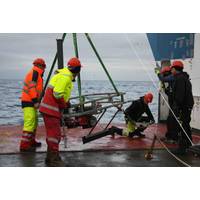
Ocean Robots Explore the Role of ‘Marine Snow’ in Carbon Storage
in the project is the FluxCAM, a marine snow camera system designed to measure the sinking speeds of different-sized particles to reduce uncertainties in how much carbon the ocean absorbs from the atmosphere.Two FluxCAMs were installed on a deep-sea mooring in the Labrador Sea, between Newfoundland and Greenland, last year, along with a specially programmed drifting profiling float.Now, they have been joined by autonomous underwater gliders, which will measure ocean properties and carbon flux for five to six months.“However, the rate at which these particles sink and how much carbon is ultimately
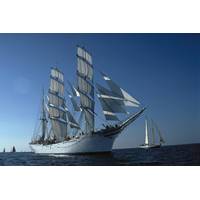
Kongsberg Discovery Technology Sets Sail On One Ocean Expedition Research Voyage
how marine life is affected by ocean movements, and recording underwater noise, using hydrophones, to ‘listen’ for pollution and monitor marine mammals, such as whales.The One Ocean Expedition sets sail during One Ocean Week in Bergen, calling in at ports including Reykjavik, Nuuk (Greenland), Cambridge Bay (Canada), Seattle, La Paz (Mexico), Cartagena (Columbia), Cadiz, and Dublin. During its stop in Nice, France, vessel team members will participate in the 2025 UN Ocean Conference. Statsraad Lehmkuhl will return to Bergen in April 2026, in time for next year’s One Ocean Week
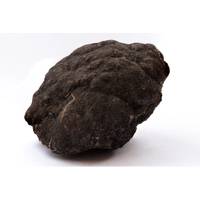
White House Could Bypass UN on Deep-Sea Mining
review process, according to two sources with direct knowledge of the deliberations.If signed, the order would mark U.S. President Donald Trump's latest attempt to tap international deposits of nickel, copper and other critical minerals used widely across the economy after recent efforts in Greenland and Ukraine. Trump earlier this month also invoked emergency powers to boost domestic minerals production.The International Seabed Authority - created by the United Nations Convention on the Law of the Sea, which the U.S. has not ratified - has for years been considering standards for deep-sea
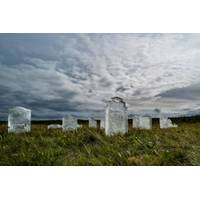
A Graveyard for Glaciers
2 billion people rely on glacier and snowmelt for freshwater.Ice loss from glaciers contributed around 21% of the total sea-level rise over the period 1993–2018, around half the contribution from expansion due to ocean warming (42%) but larger than contributions from melting of the ice sheets in Greenland (15%) and Antarctica (8%).“The conversation about climate change can be very abstract, with many devastating statistics and sophisticated scientific models that may feel incomprehensible,” said Rice University anthropologist Cymene Howe back in 2019 when a memorial was unveiled, the
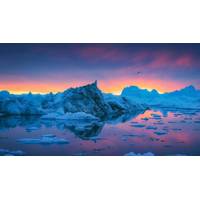
MoU Signed for Pan-Arctic Cable System
digital connectivity infrastructure.The MoU affirms the partners’ vested interests in establishing and executing a long-term strategy for jointly realizing the development and implementation of a pan-Arctic submarine cable system.Polar Connect is a proposed subsea cable on a direct route east of Greenland, close to the geographical North Pole, aiming to connect Europe, North America and Japan on the shortest possible route. NORDUnet is acting as a catalyst to form a Europe-based alliance to build the cable system and secure 10 % of the capacity of the fiber for European research and education.Currently
 December 2025
December 2025




